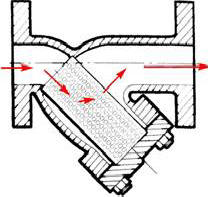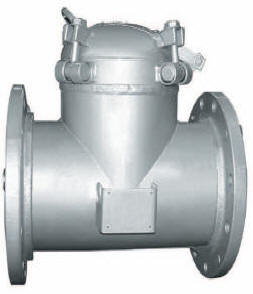How to Choose Between a Simplex Strainer vs Y Strainer
Comparison of basket and Y strainers
Wye ('Y') strainers and Pot (aka. Tee or 'T') strainers have many similarities, so how does one decide which style is the best fit for an application?
Similarities
Y and T strainers are both simplex style pipeline strainers designed for batch applications with a light particle load; to clean the internal screen requires interrupting the process flow.
 Y Strainers
Y Strainers
Although commonly used for
liquid applications, the use of Y type strainers were initially for steam, air
and other inert gases to protect downstream equipment from a
"particulate upset condition" such as protecting steam condensers from
rogue pipe scale. Y strainers have a blow-down port for steam
applications and this flushing capability is a characteristic that T
strainers do not have. While blow-down may work for aqueous
applications, the efficiency of flushing depends upon the particles
retained not becoming embedded within the element.
Although it is
possible to fabricate Y strainers to satisfy specific applications, the
majority of Y strainers are cast items, thus non-customizable.
It is common for Y strainers to be available in 1/4" through 10" sizes
and because they are a cast item manufactured in foundry-pour based
quantities, shipment is often made within just a day or two after
receipt of an order. The available pressure class ranges and breadth of
materials of construction (iron, steel, bronze, and 316SS) are also
advantages of Y strainers.
The open area ratio (OAR) for Y
strainers is typically a little better than T strainers; most of our Y
strainers have a 3:1 OAR wheras the larger size T strainers have an OAR
of <= 2.
Y strainers have a screwed or bolted chamber cover for
screen access and are installed such that when opened the process fluid
will fall/drain out.
 T strainers
T strainers
T strainers usually begin at
larger sizes (2") and can be fabricated for 24" or larger pipelines. As
a fabricated product, the lead times range from 8-12+ weeks (inclusive
of generating approval drawings and manufacturing).
While the OAR for a T strainer is typically less than a
comparable size Y strainer, its' flow capacity is higher.
This is attributable to the flow path within a T strainer having a
"straight-through" design as well as the convoluted element shape.
When installed horizontally, the chamber cover of a T strainer
can be opened without the process fluid draining from the chamber; this
might be a desirable feature with valuable or hazardous process fluids.
Summary
Y strainers typically offer the best
value in terms of initial cost, lead time and overall flexibility which
include materials of construction, pressure class, and inherent built-in
blow-down port/drain.
T strainers are used when transferring
fluids at higher velocities (equates to higher flow rates), for larger
pipelines, applications that require special features and for quicker
access to the straining element.



